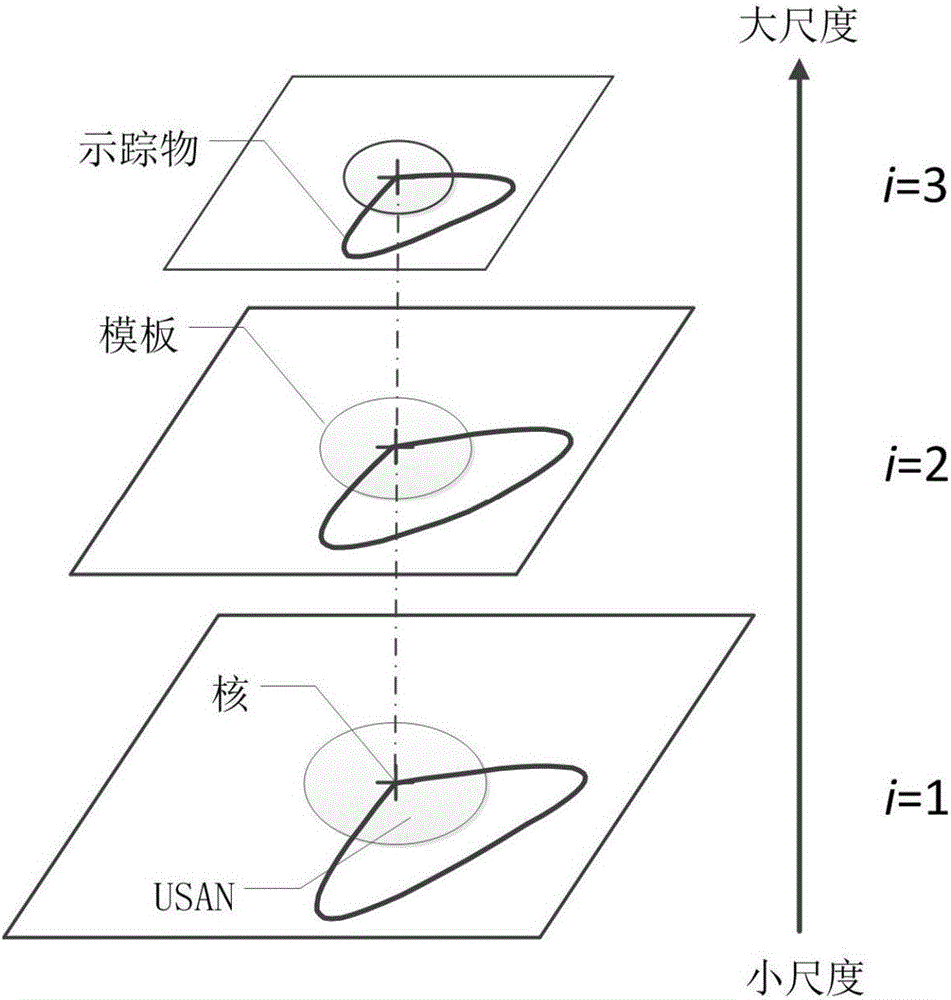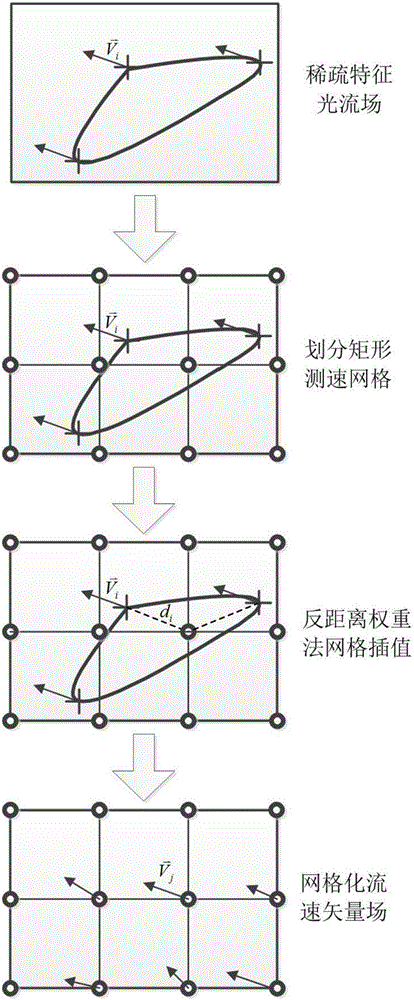Fluid motion vector estimation method based on feature optical flow
A fluid motion and motion vector technology, applied in computing, image data processing, instruments, etc., can solve the problems of insufficient detection and positioning accuracy, lack of scale invariance, position offset of corner points, etc., and achieve strong real-time performance. , Improve the effect of image far-field spatial resolution reduction and good robustness
- Summary
- Abstract
- Description
- Claims
- Application Information
AI Technical Summary
Problems solved by technology
Method used
Image
Examples
Embodiment Construction
[0042] The technical scheme of the present invention is described in detail below in conjunction with accompanying drawing:
[0043] The workflow of the motion vector estimation method of the present invention is as follows: figure 1 shown. First, a multi-scale SUSAN feature point detection algorithm is used to detect the feature points in the image. The algorithm is based on the scale space theory, and the continuously changing scale parameters are introduced on the basis of the traditional SUSAN operator to obtain the scale space representation sequence at multiple scales. Realize the extraction of feature points and sub-pixel positioning at different resolutions, which improves the robustness and accuracy of feature point detection; then, using the characteristics of video encoding and decoding, a priori feature optical flow estimation in the H.264 video compression domain is used Algorithm, the motion vector of the macroblock is extracted from the code stream in the compr...
PUM
 Login to View More
Login to View More Abstract
Description
Claims
Application Information
 Login to View More
Login to View More - R&D
- Intellectual Property
- Life Sciences
- Materials
- Tech Scout
- Unparalleled Data Quality
- Higher Quality Content
- 60% Fewer Hallucinations
Browse by: Latest US Patents, China's latest patents, Technical Efficacy Thesaurus, Application Domain, Technology Topic, Popular Technical Reports.
© 2025 PatSnap. All rights reserved.Legal|Privacy policy|Modern Slavery Act Transparency Statement|Sitemap|About US| Contact US: help@patsnap.com



